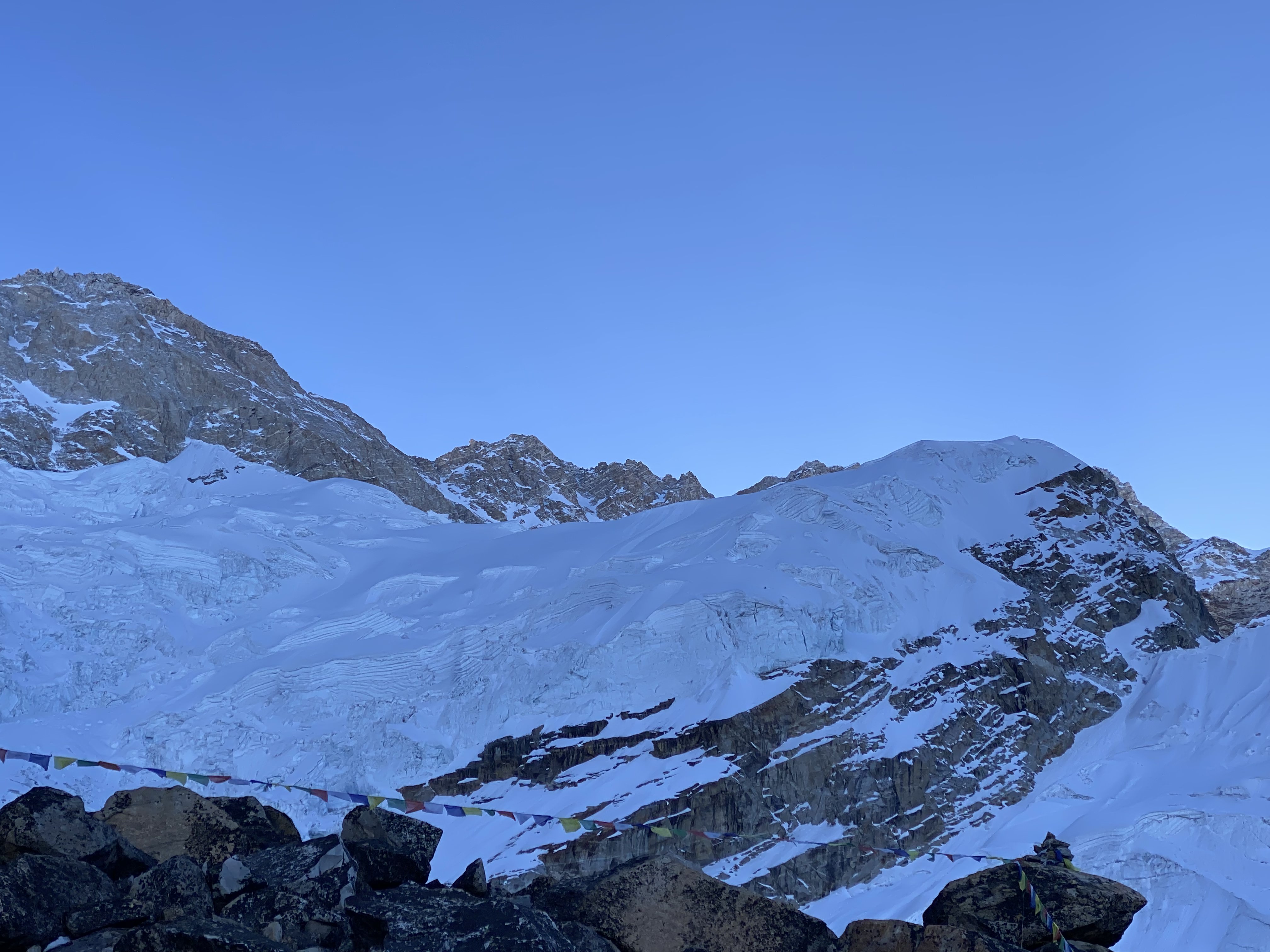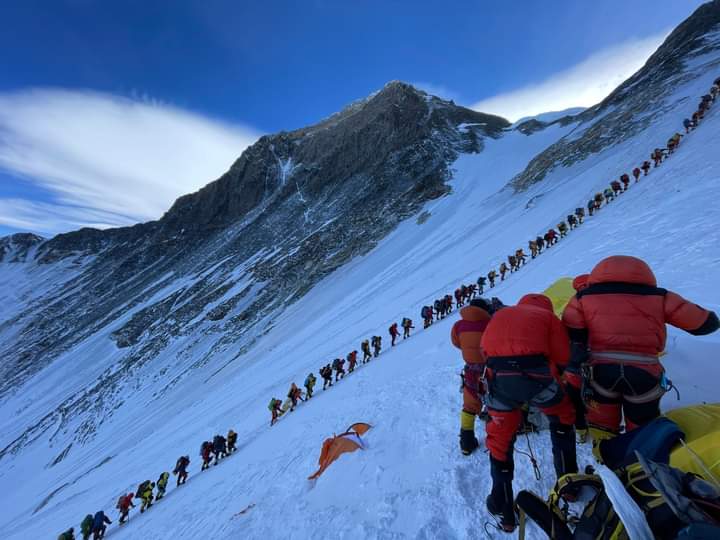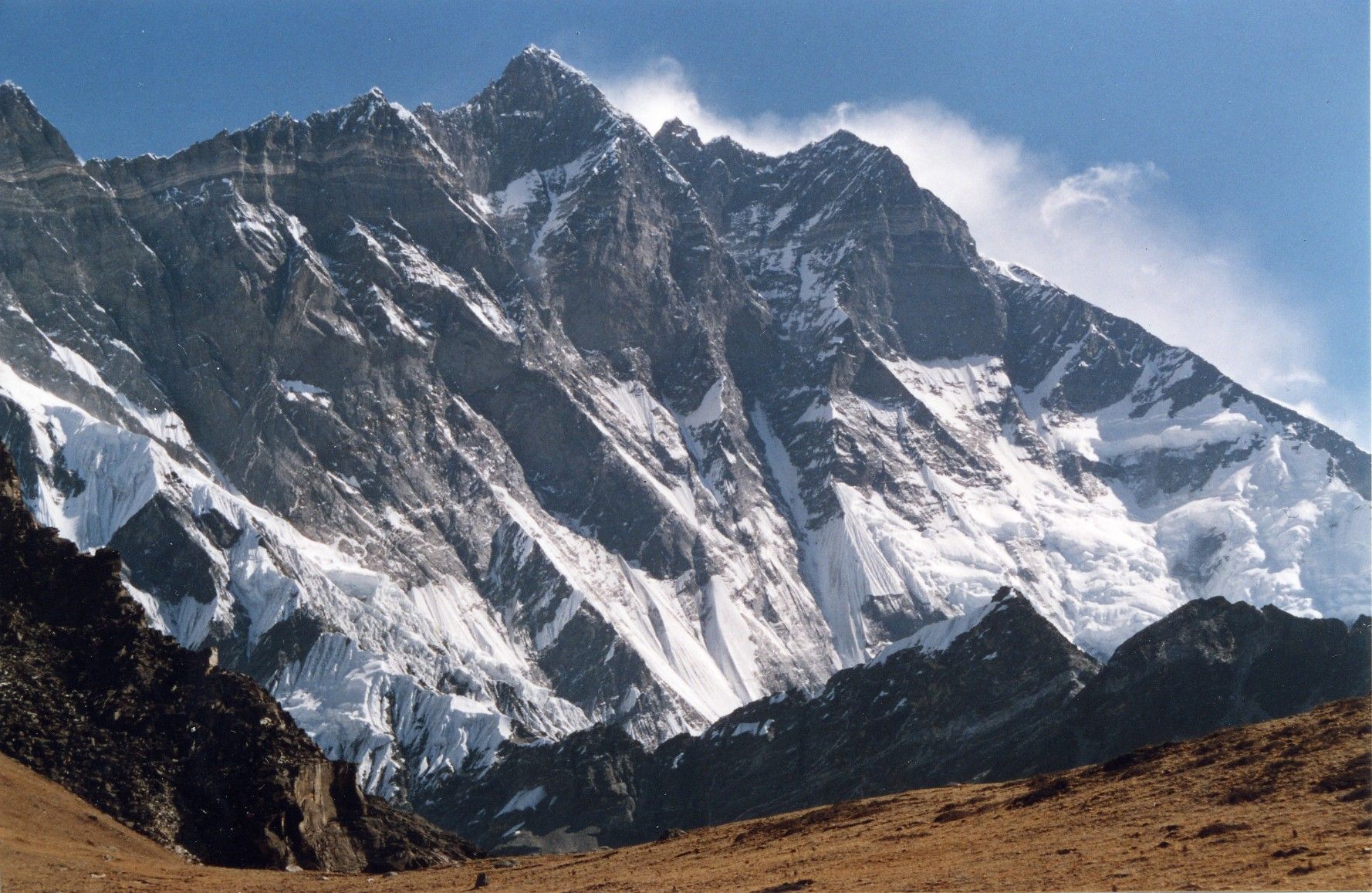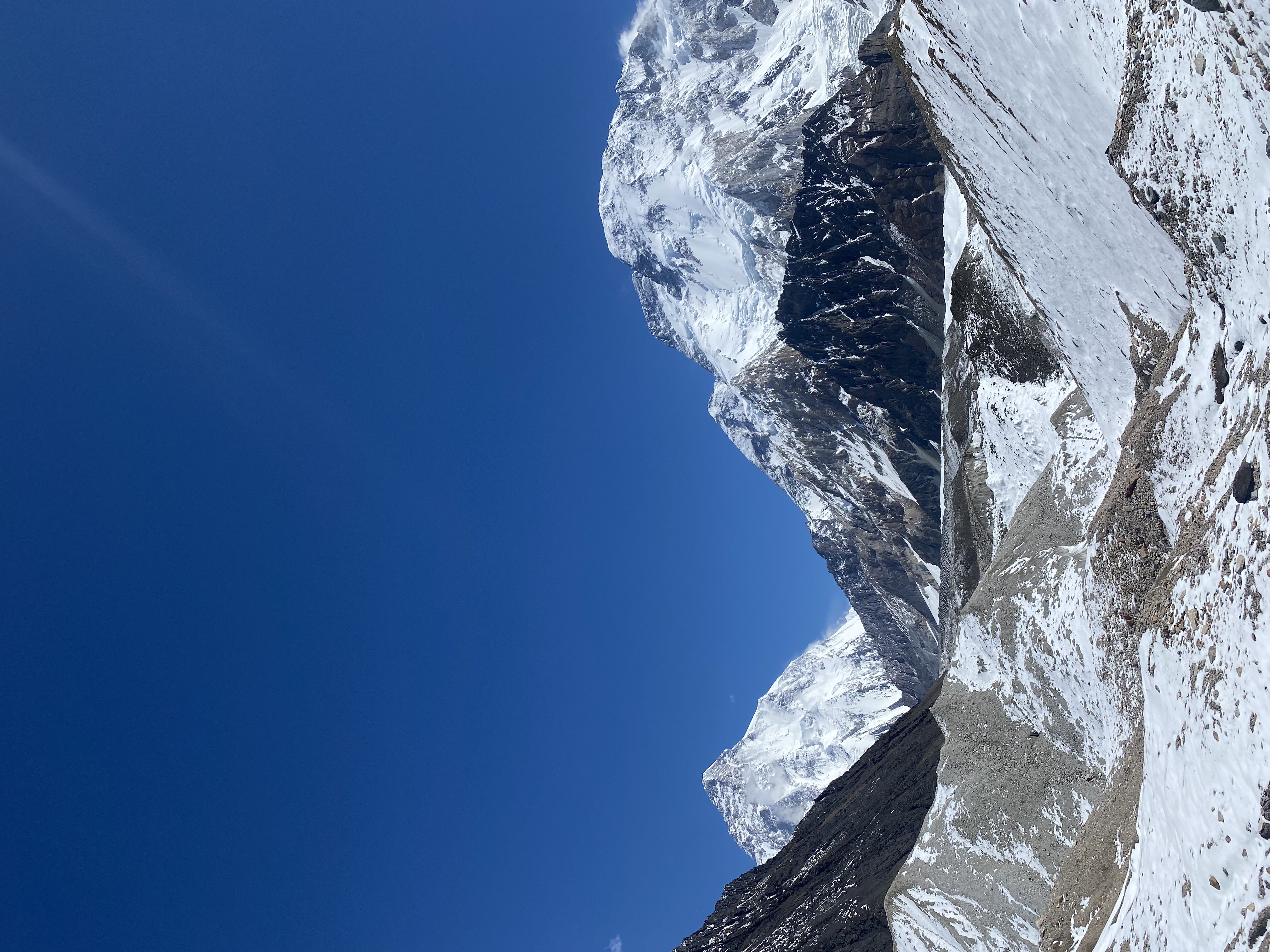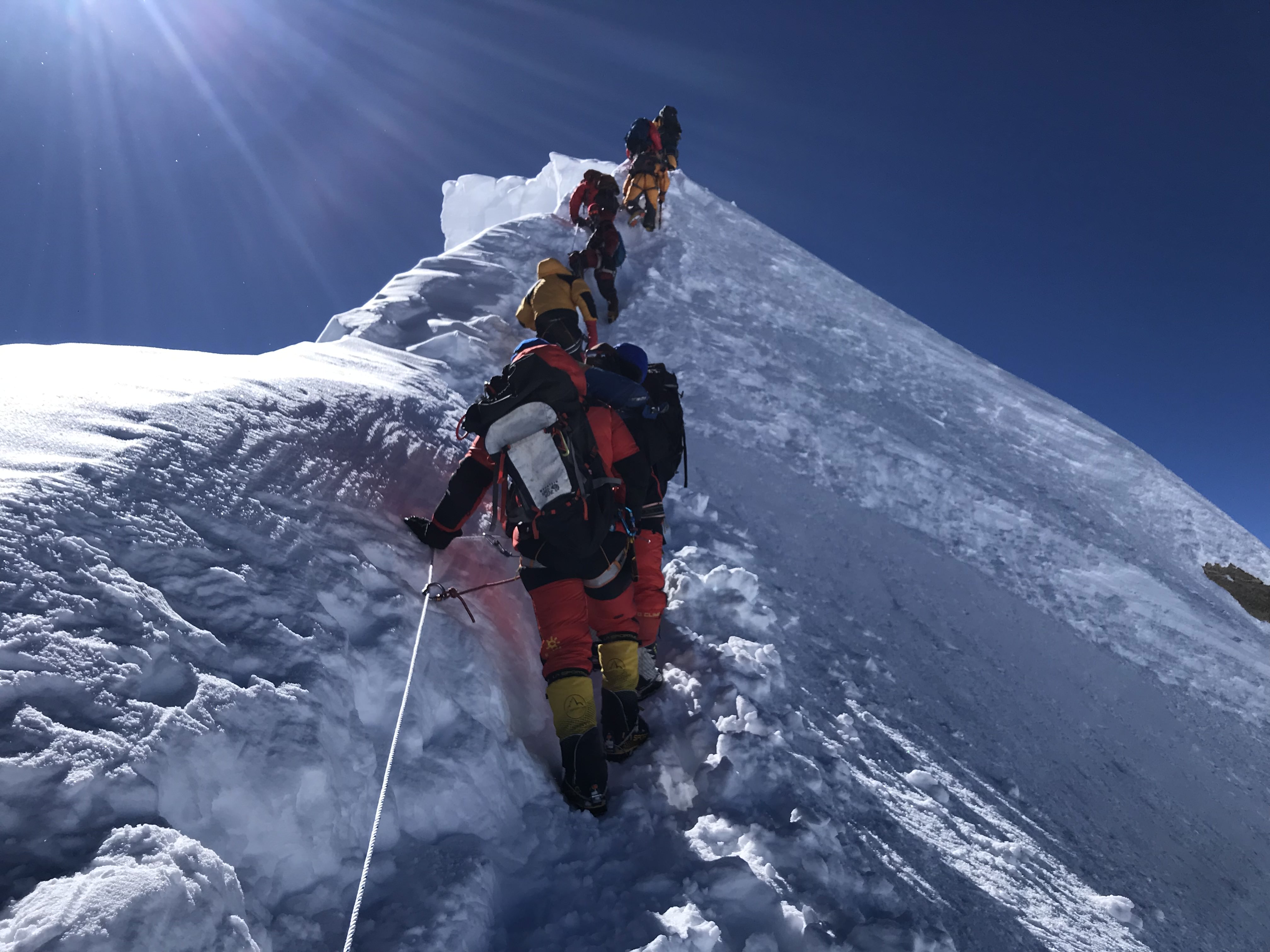Kanchenjunga, the third-highest peak in the world and the second-highest in Nepal, stands as a grand and impressive symbol of the Himalayas. It's located in the eastern part of the Himalayas, where Nepal and India meet. Kanchenjunga ascends to an impressive elevation of 8,586 meters (28,169 feet) above sea level. It remains one of the most revered and breathtaking peaks on Earth, not just for its lofty height but also for the mystical and cultural significance that surrounds it. The region surrounding the mountain is home to perfect landscapes, diverse ecosystems, and a wealth of flora and fauna, protected in the Kanchenjunga Conservation Area and adjacent Khangchendzonga National Park.
The name "Kanchenjunga" originates from the Tibetan words "Kanchen" and "Dzonga," which together translate to "The Five Treasures of the Great Snow." This name reflects the five famous peaks that make up the Kanchenjunga massif: Kanchenjunga I (8,586m), Kanchenjunga West (also known as Yalung Kang, 8,505m), Kanchenjunga South (8,494m), Kangbachen (7,903m), and Kanchenjunga Central (8,482m). According to local legends and spiritual beliefs, these five treasures symbolize gold, silver, precious gems, grains, and sacred scriptures. The mountain holds deep cultural and religious significance for both Nepali and Tibetan communities, who revere it as a sacred entity and a guardian of nature’s wealth.
Kanchenjunga has a storied history of exploration and mountaineering, dating back to the mid-19th century when it was first surveyed by the British in 1849. During that time, it was initially thought to be the highest mountain in the world, a title later claimed by Mount Everest. However, despite its slightly lower elevation, Kanchenjunga has consistently remained one of the most challenging and technically demanding mountains to climb. The first successful ascent of Kanchenjunga was accomplished on May 25, 1955, by British climbers Joe Brown and George Band as part of a British expedition. Unlike other peaks, the climbers deliberately stopped just short of the true summit out of respect for the local belief that the summit should remain untouched. This tradition continues among most climbers even today, as an act of reverence to the mountain’s spiritual significance.
Kanchenjunga is known not only for its towering presence but also for the extreme challenges it presents to climbers. The mountain is infamous for its betraying terrain, unpredictable weather, and high avalanche risks. Unlike some of the more commercialized mountains like Everest, Kanchenjunga remains relatively remote and less frequently climbed. Its steep and icy slopes, crevasses, and long, challenging routes demand high levels of technical expertise, physical patience, and mental resilience. The extreme altitude and icefall challenges make it a daunting expedition. Climbers experience severe mountain weather, and the risks of altitude sickness are high.
Despite these challenges, Kanchenjunga continues to attract elite mountaineers and adventure seekers who aspire to test their limits. Conquering this peak is not just about reaching the summit; it is a journey of self-discovery, personal growth, and unparalleled adventure. Many climbers describe the experience as transformative, offering a profound connection with nature, a humbling encounter with the forces of the wild, and an enduring sense of accomplishment. The Kanchenjunga expedition also involves a dedicated team, including skilled mountain guides and Sherpa support, ensuring the safety of the climbers.
Beyond the mountaineering aspect, Kanchenjunga is a marvel of natural beauty. The region surrounding the mountain is home to perfect landscapes, diverse ecosystems, and a wealth of flora and fauna. The Kanchenjunga Conservation Area in Nepal and the adjacent Khangchendzonga National Park in India protect the biodiversity of this remote wilderness, offering refuge to rare and endangered species such as the snow leopard, red panda, Himalayan blue sheep, and various species of pheasants and eagles. The region is also known for its spectacular trekking routes, which take adventurers through lush rhododendron forests, picturesque alpine meadows, cascading waterfalls, and traditional mountain villages. The Kanchenjunga Base Camp trek is one of the most rewarding yet least crowded trekking experiences in Nepal, providing an intimate encounter with the grandeur of the Himalayas and the rich cultural traditions of the original communities who inhabit the region.
Kanchenjunga is more than just a mountain; it is a witness to the raw beauty and wild power of nature. For climbers, it represents the ultimate challenge. For trekkers, it offers a journey into an untouched paradise. And for those who simply admire from afar, it stands as a symbol of the lasting majesty of the Himalayas. Whether viewed from a distance, explored through trekking, or attempted as a summit expedition, Kanchenjunga remains an iconic beacon of adventure, spirituality, and natural wonder. Its lofty peaks, rich history, and cultural significance make it a true jewel of the Himalayas and a place where human determination meets the grandeur of the Earth’s most impressive landscapes.
